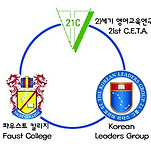<p>&#160;</p><p><span style="color: #0e1df1; background-color: #ffffff;" data-ke-size="size23"><b>[윤희영의 News English] </b></span></p><p><span style="color: #222222;" data-ke-size="size26"><b>&#8203;</b></span></p><p><span style="color: #ff0010; background-color: #ffffff;" data-ke-size="size23"><b>난초형</b></span><span style="color: #ff0010; background-color: #ffffff;" data-ke-size="size23"><u><b>(orchid)</b></u></span><span style="color: #ff0010; background-color: #ffffff;" data-ke-size="size23"><b> vs. 민들레형</b></span><span style="color: #ff0010; background-color: #ffffff;" data-ke-size="size23"><u><b>(dandelion)</b></u></span><span style="color: #ff0010; background-color: #ffffff;" data-ke-size="size23"><b> 아이</b></span></p><p><span style="color: #222222;" data-ke-size="size16">&#8203;</span></p><p><span style="color: #222222; background-color: #ffffff;" data-ke-size="size16"><a style="color: #608cba;" href="https://www.chosun.com/people/yoon-heeyoung/" target="_blank" class="ke-link">윤희영 에디터</a></span><span style="color: #222222; background-color: #ffffff;" data-ke-size="size16"> </span><span style="color: #707070; background-color: #ffffff;" data-ke-size="size16">입력 2023.05.11. 03:00 whtjsdlfqh</span></p><p><span style="color: #707070;" data-ke-size="size16">&#8203;</span></p><p><span style="color: #0e1df1; background-color: #ffffff;" data-ke-size="size20"><u><b>난초(orchid)와 민들레(dandelion)는 완연히 다른 특징(distinct characteristics)을 가졌다. 다른 정도가 아니라 대조적이다(be contrasting).</b></u></span></p><p><span style="color: #0e1df1;" data-ke-size="size20"><b>&#8203;</b></span></p><p><span style="color: #0e1df1; background-color: #ffffff;" data-ke-size="size20"><b>난초는 기생식물(parasitic plant)은 아니지만, 다른 식물을 지지 구조물(support structure)로 삼아 자라는 착생식물이다. 흙에서 영양분을 흡수하는(absorb nutrients from the soil) 것을 도와주는 균근균(菌根菌)과 공생 관계(symbiotic relationship)로 성장한다. 특정 온도·습도·빛(specific temperature·humidity·light)을 필요로 해 돌보기 힘들다는 평을 듣는다.</b></span></p><p><span style="color: #0e1df1;" data-ke-size="size20"><b>&#8203;</b></span></p><p><span style="color: #0e1df1; background-color: #ffffff;" data-ke-size="size20"><b>이에 비해(in contrast) 민들레는 강인하고 적응력이 좋아(be hardy and adaptable) 온갖 토양과 조건에서도 잘 자란다. 단단한 땅도 뚫고 나와(break through compacted soil) 혹독한 환경에서도 생존한다(survive in harsh environments). 전쟁 중에도 끝까지 살아남아 사람들 목숨을 부지하는 식량 대용(food substitute)이 돼주기도 한다.</b></span></p><div class="figure-img" data-ke-type="image" data-ke-style="alignCenter" data-ke-mobilestyle="widthOrigin"><img src="https://t1.daumcdn.net/cafeattach/1556r/7097cae4306fe990f9ba100b96152038e4ce206d" class="txc-image" data-img-src="https://t1.daumcdn.net/cafeattach/1556r/7097cae4306fe990f9ba100b96152038e4ce206d" data-origin-width="480" data-origin-height="317"></div><p style="text-align: center;"><span style="color: #555555;" data-ke-size="size16">/일러스트=최정진</span></p><p><span style="color: #0e1df1; background-color: #ffffff;" data-ke-size="size20"><b>&#9758; </b></span><span style="color: #0e1df1; background-color: #ffffff;" data-ke-size="size20"><b></b><b><a href="https://www.npr.org/sections/health-shots/2019/03/04/699979387/is-your-child-an-orchid-or-a-dandelion-unlocking-the-science-of-sensitive-kids" target="_top" class="ke-link">https://www.npr.org/sections/health-shots/2019/03/04/699979387/is-your-child-an-orchid-or-a-dandelion-unlocking-the-science-of-sensitive-kids</a></b></span></p><p><b>Is Your Child An Orchid Or A Dandelion? Unlocking The Science Of Sensitive Kids</b></p><p>Some kids seem resilient from the start &#8212; readily able, like dandelions, to cope with stress and adversity. But pediatrician Thomas Boyce says biologically reactive kids need more support to thrive.</p><p>www.npr.org</p><p><span style="color: #0e1df1;" data-ke-size="size20"><b>&#8203;</b></span></p><p><span style="color: #0e1df1; background-color: #ffffff;" data-ke-size="size20"><b>난초형 아이와 민들레형 아이의 차이점에 관한 이론이 소셜미디어에서 인기를 얻으면서(gain popularity) 형제자매 관계에 대한 논란을 일으키고 있다(spark a debate on sibling relationships). 이 이론에 따르면, 민들레형 아이는 어떤 환경에서도 잘 자라는(thrive in any circumstances) 반면, 난초형 아이는 잠재력을 발휘할(reach their potential) 때까지 각별한 돌봄과 관심을 필요로 한다(require special care and attention).</b></span></p><p><span style="color: #0e1df1;" data-ke-size="size20"><b>&#8203;</b></span></p><p><span style="color: #0e1df1; background-color: #ffffff;" data-ke-size="size20"><u><b>말하자면(so to speak) </b></u></span><span style="color: #ff0010; background-color: #ffffff;" data-ke-size="size20"><u><b>민들레형은 </b></u></span><span style="color: #0e1df1; background-color: #ffffff;" data-ke-size="size20"><u><b>어디에서나 솟아나는 강인한 잡초 같은(be like the hardy weed) 데 비해</b></u></span><span style="color: #ff0010; background-color: #ffffff;" data-ke-size="size20"><u><b> 난초형은</b></u></span><span style="color: #0e1df1; background-color: #ffffff;" data-ke-size="size20"><u><b> 꼭 맞는 환경을 요하는 섬세한 꽃(delicate flower) 같다. 민들레형은 어떤 고난도 감당해 내지만(cope with any hardship), 난초형은 피어나는 데 알맞은 조건을 두루 갖춰주지(meet the right conditions to flourish) 않으면 시들거나 말라죽는다(wilt or wither away).</b></u></span></p><p><span style="color: #0e1df1;" data-ke-size="size20"><b>&#8203;</b></span></p><p><span style="color: #0e1df1; background-color: #ffffff;" data-ke-size="size20"><u><b>육아 역할에 대한 논란(dispute on the role of parenting)은 여기서 비롯된다. 두 가지 유형이 성인이 돼 성공할 가능성에 큰 영향을 미칠(impact their chances of succeeding as adults) 수 있기 때문이다. 일부는 모든 자녀에게 똑같은 관심과 도움을 줘야(provide equal attention and support to all their children) 한다는 입장이고, 다른 쪽에선 각각 특유의 필요성과 성격(unique needs and personalities)이 있는 개인(individual)이므로 그에 맞게 달리 대해야 한다고(be treated as such) 주장한다.</b></u></span></p><p><span style="color: #0e1df1;" data-ke-size="size20"><b>&#8203;</b></span></p><p><span style="color: #ff0010; background-color: #ffffff;" data-ke-size="size20"><u><b>두 극단의 중간은 튤립(tulip)형이라고 한다.</b></u></span><span style="color: #0e1df1; background-color: #ffffff;" data-ke-size="size20"><b> </b></span><span style="color: #0e1df1; background-color: #ffffff;" data-ke-size="size20"><u><b>튤립은 일단 심고 나면 별달리 가꾸지 않아도 잘 큰다. 추운 날씨에도 견디고 서릿발까지 이겨낸다(withstand frost). 다만, 건강하게 자라나 꽃이 만개하게 하려면(encourage healthy growth and blooming) 가을과 봄에 거름(manure)이나 비료(fertilizer)를 한번씩 주기만 하면 된다고 한다.</b></u></span></p><p><span style="color: #0e1df1;" data-ke-size="size20"><b>&#8203;</b></span></p><p><span style="color: #ff0010; background-color: #ffffff;" data-ke-size="size20"><b>[영문 참고자료 사이트]</b></span></p><p><span style="color: #0e1df1; background-color: #ffffff;" data-ke-size="size20"><b>&#9758; </b></span><span style="color: #0e1df1; background-color: #ffffff;" data-ke-size="size20"><u><b></b></u><u><b><a href="https://www.buzzfeed.com/victoriavouloumanos/orchid-dandelion-child-cognitive-psych-tiktok" target="_top" class="ke-link">https://www.buzzfeed.com/victoriavouloumanos/orchid-dandelion-child-cognitive-psych-tiktok</a></b></u></span></p><p><span style="color: #0e1df1; background-color: #ffffff;" data-ke-size="size20"><b>&#9758; </b></span><span style="color: #0e1df1; background-color: #ffffff;" data-ke-size="size20"><u><b></b></u><u><b><a href="https://www.dailymail.co.uk/femail/article-11942281/Hypnotherapist-goes-viral-sharing-dandelions-vs-orchids-theory-siblings.html" target="_top" class="ke-link">https://www.dailymail.co.uk/femail/article-11942281/Hypnotherapist-goes-viral-sharing-dandelions-vs-orchids-theory-siblings.html</a></b></u></span></p><p><span style="color: #0e1df1; background-color: #ffffff;" data-ke-size="size20"><b>&#9758; </b></span><span style="color: #0e1df1; background-color: #ffffff;" data-ke-size="size20"><u><b></b></u><u><b><a href="https://www.scientificamerican.com/article/your-kid-is-probably-not-an-orchid-or-a-dandelion-but-could-be-both/" target="_top" class="ke-link">https://www.scientificamerican.com/article/your-kid-is-probably-not-an-orchid-or-a-dandelion-but-could-be-both/</a></b></u></span></p><p><span style="color: #0e1df1; background-color: #ffffff;" data-ke-size="size20"><b>&#9758; </b></span><span style="color: #0e1df1; background-color: #ffffff;" data-ke-size="size20"><u><b></b></u><u><b><a href="https://www.npr.org/sections/health-shots/2019/03/04/699979387/is-your-child-an-orchid-or-a-dandelion-unlocking-the-science-of-sensitive-kids" target="_top" class="ke-link">https://www.npr.org/sections/health-shots/2019/03/04/699979387/is-your-child-an-orchid-or-a-dandelion-unlocking-the-science-of-sensitive-kids</a></b></u></span></p><p><span style="color: #0e1df1;" data-ke-size="size20"><u><b>&#8203;</b></u></span></p><p><span style="color: #000000; background-color: #ffffff;" data-ke-size="size18">21세기 영어교육연구회 / ㈜ 파우스트 칼리지 </span></p><p><span style="color: #000000; background-color: #ffffff;" data-ke-size="size18">전 화 : (02)386-4802 / (02)384-3348</span></p><p><span style="color: #000000; background-color: #ffffff;" data-ke-size="size18">이메일 : faustcollege@naver.com / ceta211@naver.com</span></p><p><span style="color: #000000; background-color: #ffffff;" data-ke-size="size18">Blog : <a href="http://blog.naver.com/ceta211" target="_top" class="ke-link">http://blog.naver.com/ceta211</a> 21세기 영어교육연구회 </span></p><p><span style="color: #000000; background-color: #ffffff;" data-ke-size="size18">Cafe : </span><span style="color: #000000; background-color: #ffffff;" data-ke-size="size18"><a href="http://cafe.daum.net/21ceta" target="_top" class="ke-link">http://cafe.daum.net/21ceta</a></span><span style="color: #000000; background-color: #ffffff;" data-ke-size="size18"> 21세기 영어교육연구회 </span></p><p><span style="color: #000000; background-color: #ffffff;" data-ke-size="size18">Web-site : </span><span style="color: #000000; background-color: #ffffff;" data-ke-size="size18"><a style="color: #608cba;" href="http://www.faustcollege.com/" target="_blank" class="ke-link">www.faustcollege.com</a></span><span style="color: #000000; background-color: #ffffff;" data-ke-size="size18"> (주)파우스트 칼리지</span></p><p><span style="color: #000000;" data-ke-size="size18">&#8203;</span></p><div class="figure-img" data-ke-type="image" data-ke-style="alignCenter" data-ke-mobilestyle="widthOrigin"><img src="https://t1.daumcdn.net/cafeattach/1556r/452e2926cf4da0670ede2a2ed0397f647fb1edca" class="txc-image" data-img-src="https://t1.daumcdn.net/cafeattach/1556r/452e2926cf4da0670ede2a2ed0397f647fb1edca" data-origin-width="475" data-origin-height="395"></div><div class="figure-img" data-ke-type="image" data-ke-style="alignCenter" data-ke-mobilestyle="widthOrigin"><img src="https://t1.daumcdn.net/cafeattach/1556r/ecc1461e97546489c77d7a04e9d7693bd8d294b7" class="txc-image" data-img-src="https://t1.daumcdn.net/cafeattach/1556r/ecc1461e97546489c77d7a04e9d7693bd8d294b7" data-origin-width="550" data-origin-height="252"></div><div class="figure-img" data-ke-type="image" data-ke-style="alignCenter" data-ke-mobilestyle="widthOrigin"><img src="https://t1.daumcdn.net/cafeattach/1556r/567a2d52bbba373ded3ac1b5928b031cc9a1962a" class="txc-image" data-img-src="https://t1.daumcdn.net/cafeattach/1556r/567a2d52bbba373ded3ac1b5928b031cc9a1962a" data-origin-width="583" data-origin-height="267"></div><div class="figure-img" data-ke-type="image" data-ke-style="alignCenter" data-ke-mobilestyle="widthOrigin"><img src="https://t1.daumcdn.net/cafeattach/1556r/ea4d6986835dea7e80f21ee0860ae1a42e3b6fe5" class="txc-image" data-img-src="https://t1.daumcdn.net/cafeattach/1556r/ea4d6986835dea7e80f21ee0860ae1a42e3b6fe5" data-origin-width="583" data-origin-height="284"></div><div class="figure-img" data-ke-type="image" data-ke-style="alignCenter" data-ke-mobilestyle="widthOrigin"><img src="https://t1.daumcdn.net/cafeattach/1556r/9c13bec7fdeee8c5a458af22d34030cc9d10ad11" class="txc-image" data-img-src="https://t1.daumcdn.net/cafeattach/1556r/9c13bec7fdeee8c5a458af22d34030cc9d10ad11" data-origin-width="773" data-origin-height="1206"></div><div class="figure-img" data-ke-type="image" data-ke-style="alignCenter" data-ke-mobilestyle="widthOrigin"><img src="https://t1.daumcdn.net/cafeattach/1556r/474551ebadc201a2097b8d1982733b5aab879124" class="txc-image" data-img-src="https://t1.daumcdn.net/cafeattach/1556r/474551ebadc201a2097b8d1982733b5aab879124" data-origin-width="773" data-origin-height="612"></div><div class="figure-img" data-ke-type="image" data-ke-style="alignCenter" data-ke-mobilestyle="widthOrigin"><img src="https://t1.daumcdn.net/cafeattach/1556r/da2a4cf2324462ed0e105f21b7feae595bc6bb70" class="txc-image" data-img-src="https://t1.daumcdn.net/cafeattach/1556r/da2a4cf2324462ed0e105f21b7feae595bc6bb70" data-origin-width="773" data-origin-height="584"></div><p>&#160;</p><div class="figure-img" data-ke-type="image" data-ke-style="alignCenter" data-ke-mobilestyle="widthOrigin"><img src="https://t1.daumcdn.net/cafeattach/1556r/aeffd1b8dfae18e3bb78d532a750d99ea42b479b" class="txc-image" data-img-src="https://t1.daumcdn.net/cafeattach/1556r/aeffd1b8dfae18e3bb78d532a750d99ea42b479b" data-origin-width="773" data-origin-height="1193"></div><div class="figure-img" data-ke-type="image" data-ke-style="alignCenter" data-ke-mobilestyle="widthOrigin"><img src="https://t1.daumcdn.net/cafeattach/1556r/f7405ea525003eeff62396e0763fe16860e03a50" class="txc-image" data-img-src="https://t1.daumcdn.net/cafeattach/1556r/f7405ea525003eeff62396e0763fe16860e03a50" data-origin-width="773" data-origin-height="791"></div><div class="figure-img" data-ke-type="image" data-ke-style="alignCenter" data-ke-mobilestyle="widthOrigin"><img src="https://t1.daumcdn.net/cafeattach/1556r/22bd3c6d885c0e0193fc970234534bf69775577f" class="txc-image" data-img-src="https://t1.daumcdn.net/cafeattach/1556r/22bd3c6d885c0e0193fc970234534bf69775577f" data-origin-width="773" data-origin-height="417"></div><div class="figure-img" data-ke-type="image" data-ke-style="alignCenter" data-ke-mobilestyle="widthOrigin"><img src="https://t1.daumcdn.net/cafeattach/1556r/15576805d2d87440b8fcc8d6195c7f92a804548e" class="txc-image" data-img-src="https://t1.daumcdn.net/cafeattach/1556r/15576805d2d87440b8fcc8d6195c7f92a804548e" data-origin-width="550" data-origin-height="375"></div><div class="figure-img" data-ke-type="image" data-ke-style="alignCenter" data-ke-mobilestyle="widthOrigin"><img src="https://t1.daumcdn.net/cafeattach/1556r/9007408f7ed4a47b4ca74bfb6f10d6d56def29ba" class="txc-image" data-img-src="https://t1.daumcdn.net/cafeattach/1556r/9007408f7ed4a47b4ca74bfb6f10d6d56def29ba" data-origin-width="583" data-origin-height="776"></div><div class="figure-img" data-ke-type="image" data-ke-style="alignCenter" data-ke-mobilestyle="widthOrigin"><img src="https://t1.daumcdn.net/cafeattach/1556r/e6551511df7d71992be6954ec22903f432fdb3ab" class="txc-image" data-img-src="https://t1.daumcdn.net/cafeattach/1556r/e6551511df7d71992be6954ec22903f432fdb3ab" data-origin-width="550" data-origin-height="563"></div><div class="figure-img" data-ke-type="image" data-ke-style="alignCenter" data-ke-mobilestyle="widthOrigin"><img src="https://t1.daumcdn.net/cafeattach/1556r/300fc3a356c1934684c25db8b74d57f7a59155a2" class="txc-image" data-img-src="https://t1.daumcdn.net/cafeattach/1556r/300fc3a356c1934684c25db8b74d57f7a59155a2" data-origin-width="583" data-origin-height="899"></div><div class="figure-img" data-ke-type="image" data-ke-style="alignCenter" data-ke-mobilestyle="widthOrigin"><img src="https://t1.daumcdn.net/cafeattach/1556r/935823dde891c06fcb1a0894027eed3a4eab01be" class="txc-image" data-img-src="https://t1.daumcdn.net/cafeattach/1556r/935823dde891c06fcb1a0894027eed3a4eab01be" data-origin-width="550" data-origin-height="618"></div><div class="figure-img" data-ke-type="image" data-ke-style="alignCenter" data-ke-mobilestyle="widthOrigin"><img src="https://t1.daumcdn.net/cafeattach/1556r/21fae3a75f191649456a3cf4e513b72fb1a50ce0" class="txc-image" data-img-src="https://t1.daumcdn.net/cafeattach/1556r/21fae3a75f191649456a3cf4e513b72fb1a50ce0" data-origin-width="550" data-origin-height="618"></div><div class="figure-img" data-ke-type="image" data-ke-style="alignCenter" data-ke-mobilestyle="widthOrigin"><img src="https://t1.daumcdn.net/cafeattach/1556r/1120126d10056ef18dd19e144a97b27ac0ddbd5a" class="txc-image" data-img-src="https://t1.daumcdn.net/cafeattach/1556r/1120126d10056ef18dd19e144a97b27ac0ddbd5a" data-origin-width="583" data-origin-height="583"></div><div class="figure-img" data-ke-type="image" data-ke-style="alignCenter" data-ke-mobilestyle="widthOrigin"><img src="https://t1.daumcdn.net/cafeattach/1556r/33674c6fa26f2373b1165a8450ef34c63e5c876a" class="txc-image" data-img-src="https://t1.daumcdn.net/cafeattach/1556r/33674c6fa26f2373b1165a8450ef34c63e5c876a" data-origin-width="550" data-origin-height="499"></div><p><span style="color: #000000;" data-ke-size="size18">&#8203;</span></p>
<!-- -->



